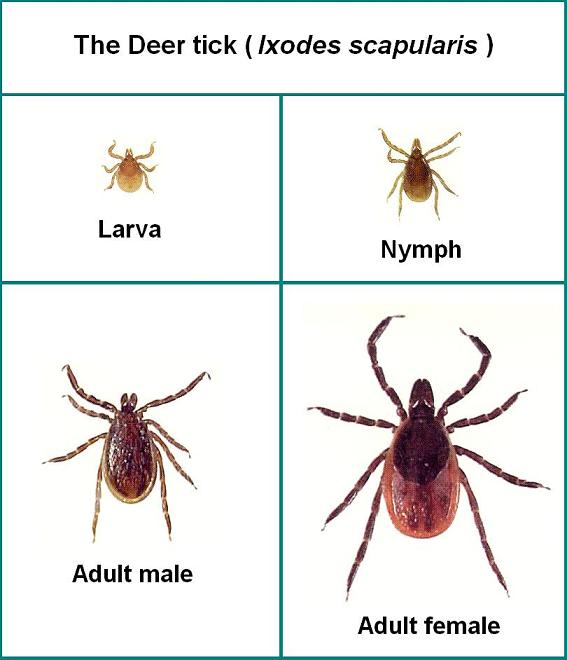
As of May 2020, the Longhorned Tick has been found in six NJ counties (Hunterdon, Union, Middlesex, Mercer, Bergen, Somerset, Passaic, Camden and Monmouth)and in twelve other states.

X Trustworthy Source Centers for Disease Control and Prevention Main public health institute for the US, run by the Dept.In late 2017, the Asian Longhorned Tick ( Haemaphysalis longicornis), was found on a sheep in Hunterdon County. This form of tick rarely attaches to humans.

It is especially active in Northern California. The Western Blacklegged Tick is another form of the deer tick, found along the Pacific Coastal regions.The adult form of the deer tick lives in woody, brushy habitats.of Health and Human Services Go to source X Trustworthy Source Centers for Disease Control and Prevention Main public health institute for the US, run by the Dept. Other forms of ticks, such as the dog tick, are generally most active in spring and summer months only. However, they may be active whenever the temperature is above freezing. Deer ticks are most active in the spring, summer and fall.Deer ticks are particularly well-established along the Eastern and Upper Midwestern United States, but can be found as far south as Texas and into Missouri, Kansas, and parts of Oklahoma. As the name implies, they're frequently carried by dogs, and can be found in kennels, around veterinary offices, and outdoor areas frequented by infected animals.Ĭonsider where you found the tick. X Research source However, they are one of the few ticks that can infest a home. Brown dog ticks rarely attach to humans.The deer tick is about half the size of the brown dog tick, both in its pre-fed state and when engorged.The lone star tick has a distinctive white star-like marking on its scutum. Brown dog ticks will have mottled brown and white markings on their scutums, which deer ticks do not have.You'll need to look to their markings to tell them apart. All three ticks tend to live in wooded or recently cleared areas, and crawl up from the ground. The name "wood tick" is used for a number of different ticks, including the deer tick, lone star tick, and American dog tick.Adult males are dark brown to black in color. Unfed adult female deer ticks have a unique bright orange-red body surrounding the black scutum. Put the tick in a vial or lidded jar, or place it on a piece of white paper and use a piece of clear tape to cover it.of Health and Human Services Go to source You should still be able to identify the tick without the mouth-parts. You may be able to remove the mouth-parts separately using clean tweezers. Did you remove the whole tick? If you've jerked or twisted the tick while removing it, the mouth-parts may break off and remain in the skin.X Research source Old-fashioned methods, such as soaking it with petroleum jelly or painted the affected site with nail polish, should be avoided as they traumatize the tick, which may then regurgitate its stomach contents (including bacteria) into the dog's bloodstream. The best way to remove the tick is to use pointy-edged tweezers, angling the points to ensure that the head of the tick is removed along with the body.

Remove the tick from its host, if necessary.


 0 kommentar(er)
0 kommentar(er)
